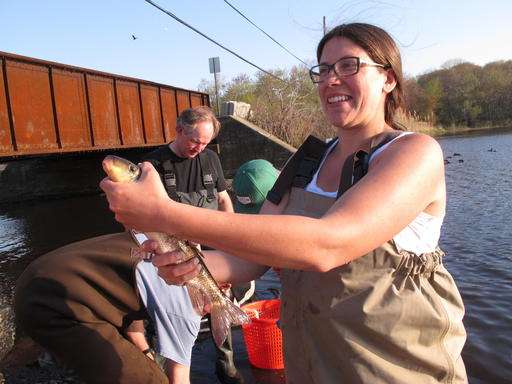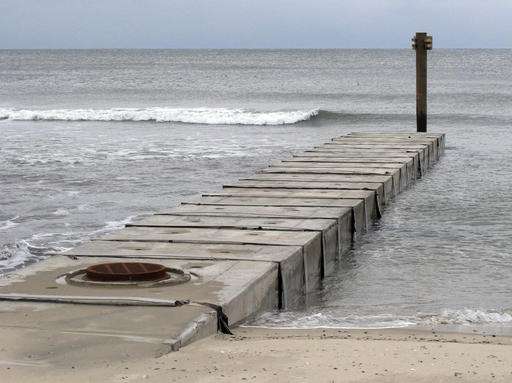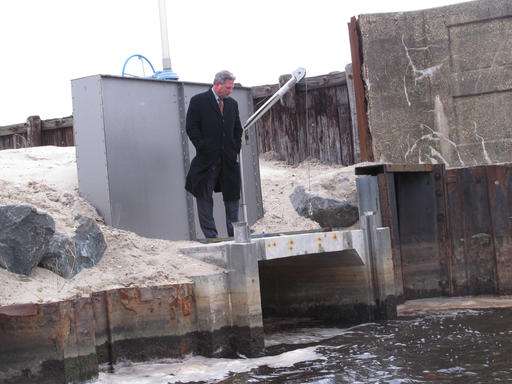In a pond called Wreck, a new creation helps fish breed

For years, the conflicting goals of protecting the environment and some of the New Jersey shore's priciest real estate from storms have bedeviled a body of water known as Wreck Pond.
Storms sometimes open a channel between the 48-acre tidal pond and the ocean, but governments keep sealing it shut to protect homes from flooding. The result has been poor water quality and much narrower access to the ocean that hurts fish that travel from ocean to pond to breed.
But a program that sprang from resiliency planning after Superstorm Sandy is addressing both problems at once. The main phase of the work has been completed, consisting of a concrete culvert between the pond and the ocean to make it easier for fish, including herring, to reach the sea.
"This is a demonstration of how we can restore the coastal ecology of the Jersey shore while at the same time keeping communities safe from future storms," said Tim Dillingham, executive director of the American Littoral Society, the coastal advocacy group that oversaw construction. "We're restoring a piece of the ecology that has been lost."
The inlet at Wreck Pond has come and gone over the decades. Its very name came from shipwrecks that used to occur when the inlet was open in the 1800s; the Sea Girt lighthouse was built to illuminate it. In the 1600s, Lenape Indians came to the inlet for bathing rituals and clam feasts. Records from the 1920s show the inlet still open, but fairly shallow and often clogged with sand.

In May 1938, Wreck Pond was dammed off from the ocean in the name of protecting the oceanfront communities on either side of it from flood damage from surging ocean waters. Two weeks later, the ocean broke through, and the first of many years of repair and maintenance work ensued.
Most recently, Sandy re-opened it in 2012, but drifting sand naturally reclosed it within two weeks, and government crews reinforced it as part of a beach replenishment project.
But in reducing the danger of one type of flooding—ocean waves surging into the pond—dams inadvertently raised the risk of a different type of flooding, from heavy rainfall that swells the pond beyond its banks. The tunnel will give that water someplace to go.
In addition to letting fish in and out more easily, the culvert can be opened or closed as needed during storms to control flooding.
It's akin to an express lane for fish, but people will benefit, too. The project enables officials to better control water levels in the pond during storms, and dramatically improves water quality by flushing it regularly with infusions of ocean water, preventing bacteria and algae blooms from choking it.

And it should reduce, if not eliminate altogether, the frequent ocean beach closings that result when even a small amount of rain falls, sending harmful bacteria into the ocean.
The work is part of $7.4 million worth of work in and around the pond, financed by federal, state, county and local governments.
The Littoral Society has been monitoring fish traffic and is pleased to see large volumes of river herring and other species using it to get to and from the pond.
"There was a time when the pond had a bountiful natural fish population," said Spring Lake Mayor Jennifer Naughton. "With the increased flow of salt water into the pond, we expect to see a significant increase in water quality."
© 2016 The Associated Press. All rights reserved.





















